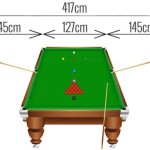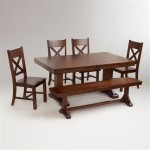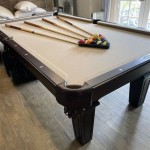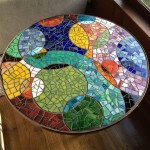Low Japanese Style Dining Tables: A Guide to Design, Functionality, and Cultural Significance
Low Japanese-style dining tables, often referred to as "chabudai" or "kotatsu" tables, represent a distinct element of Japanese interior design, blending functionality with cultural tradition. These tables are characterized by their low height, typically ranging from 12 to 16 inches, and are designed to be used while sitting on cushions or directly on the floor. Their popularity extends beyond Japan, appealing to individuals seeking minimalist aesthetics and a more intimate dining experience. This article explores the design characteristics, functional aspects, and cultural context surrounding low Japanese-style dining tables.
The incorporation of low Japanese-style dining tables into a living space necessitates a different approach to furniture arrangement compared to conventional dining setups. The low profile of the table encourages a closer connection to the floor, fostering a sense of grounding and tranquility within the room. This design choice influences the selection of accompanying elements, such as floor cushions, zabuton, and other low seating options, to create a harmonious and cohesive interior.
Design and Material Variations
Low Japanese-style dining tables exhibit a wide array of design variations, reflecting both traditional and contemporary influences. Traditional chabudai tables are often crafted from natural wood, such as cedar, cypress, or bamboo, showcasing the inherent beauty of the materials. These tables may feature intricate joinery techniques and minimalist embellishments, emphasizing the natural grain and texture of the wood. The shape of the table can vary from round or oval to rectangular or square, accommodating different spatial requirements and aesthetic preferences.
Modern interpretations of low Japanese-style dining tables often incorporate different materials, such as metal, glass, or laminate, to create a more contemporary look. Clean lines, geometric shapes, and minimalist designs are common features of these modern tables, reflecting the shift towards a more streamlined aesthetic. Some designs may even incorporate storage compartments or folding mechanisms to enhance functionality and space efficiency.
The finishing of the wood also plays a crucial role in the overall aesthetic of the table. A natural oil finish can highlight the wood's natural grain and color, while a lacquer finish can provide a more durable and glossy surface. The choice of finish depends on the desired look and the intended use of the table. For instance, a table used for dining may benefit from a more durable finish that can withstand spills and scratches.
Functionality and Adaptability
Beyond their aesthetic appeal, low Japanese-style dining tables offer a range of functional benefits. The low height of the table encourages a more relaxed and comfortable posture, promoting better digestion and reducing strain on the back. The intimate setting created by the low table fosters a sense of connection and conversation among diners.
Furthermore, low Japanese-style dining tables are highly adaptable and can be used for a variety of activities. They can serve as a dining table for meals, a workspace for studying or working, or a gathering place for games and social activities. Their versatility makes them a valuable addition to any home, particularly in smaller living spaces where maximizing functionality is essential.
Kotatsu tables, a specific type of low Japanese-style dining table, incorporate a heating element underneath the tabletop and are typically covered with a futon or blanket. This design provides a warm and cozy gathering space during the colder months, making them a popular choice in Japanese households. The kotatsu table encourages families to gather together, share meals, and enjoy each other's company in a comfortable and inviting setting.
Cultural Significance and Etiquette
Low Japanese-style dining tables hold significant cultural importance in Japan. Traditionally, sitting on the floor was the norm in Japanese homes, and the chabudai table served as the central gathering place for families. Dining at a low table is not merely a practical matter but rather an integral part of Japanese customs and etiquette.
When using a low Japanese-style dining table, it is customary to sit on a cushion or directly on the floor in a comfortable and respectful manner. Proper posture is important, and slouching or leaning on the table is generally considered impolite. It is also customary to remove one's shoes before entering a Japanese home, further emphasizing the importance of cleanliness and respect for the living space.
The act of sharing a meal at a low Japanese-style dining table is often accompanied by specific customs and rituals. For example, it is customary to express gratitude before and after the meal by saying "itadakimasu" and "gochisousama deshita," respectively. These expressions acknowledge the effort involved in preparing the meal and show appreciation for the food and the company. Serving others before oneself and refilling drinks are also common gestures of courtesy and hospitality.
Furthermore, the low height of the table reflects a sense of humility and equality among diners. By sitting at the same level, everyone is on equal footing, fostering a more egalitarian and harmonious dining experience. This emphasis on equality and respect is deeply ingrained in Japanese culture and is reflected in the design and use of low Japanese-style dining tables.
In conclusion, low Japanese-style dining tables represent a unique blend of design, functionality, and cultural significance. Their low profile, natural materials, and minimalist aesthetics contribute to a serene and inviting atmosphere. Their versatility and adaptability make them a valuable addition to any home, while their cultural context adds depth and meaning to the dining experience. By understanding the design characteristics, functional aspects, and cultural significance of low Japanese-style dining tables, individuals can appreciate the beauty and value of this unique piece of furniture.

Diy Low Dining Table And Cushions Japanese Inspired 低ダイニングテーブルやクッション Minimalist Room Living Rooms Small Design

Buy Solid Wood Japanese Style Low Dining Table With Breakfast Set In Latest Sets Collection Saraf Furniture

Small Rectangle Low Dining Table Coffee Or Desk Japanese Mid Century Chabudai Tatami Natural Bamboo

Solid Wood Dining Table Tatami Japanese Style Produce To Order Ion Lead Time Around 3 Weeks Furniture Home Living Tables Sets On Carou

20 Trendy Japanese Dining Table Designs

Japanese Low Dining Table Best In Singapore Sep 2024 Lazada Sg

Sheesham Wood Japanese 6 Seater Dining Table Honey Finish Garg Furniture

Japanese Low Dining Table For Style Nan Bamboo Tea Set

20 Trendy Japanese Dining Table Designs

Japanese Low Dining Table Best In Singapore Sep 2024 Lazada Sg
Related Posts








